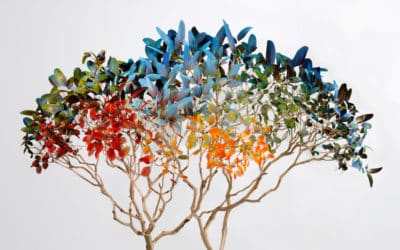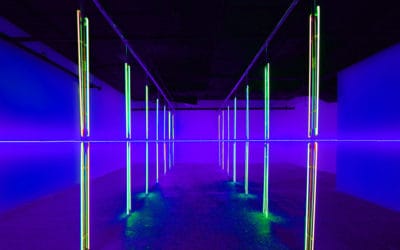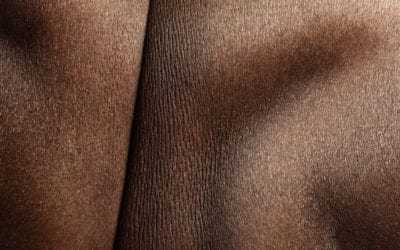CULTURAMA is the new destination for discoverers defending the best of Art, Architecture and Design in order to reinvent your contemporary lifestyle. As a bilingual webmagazine and audiovisual broadcaster with CULTURAMA STUDIO, CULTURAMA explores the trends of 21st century Art and Design, with its exclusive interviews, documentaries, articles, and mini-series. Hundreds of renowned artists have already participated in this adventure. CULTURAMA builds bridges between creators and executives, and as such, it becomes essential.
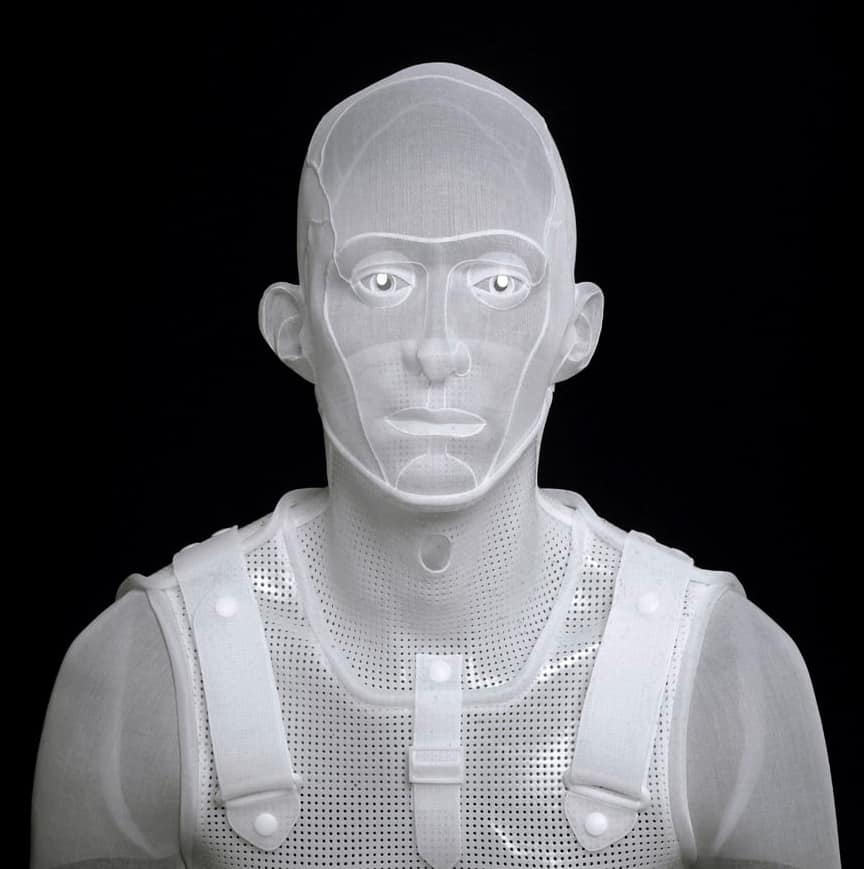
Ali Mahdavi | Organdy, PET, plexiglass | Plexiglas box: 65 x 45 x 70cm | 2015 | ANGÉLIQUE ©
I imagine
that all matter has evaporated,
leaving for only trace,
white envelopes, those of different realities.
So, plunging your visionary gaze, you see:
the top, the bottom,
the outside, the inside,
surface and depth,
both an appearance and its mystery.
Angélique Lefèvre
Summary
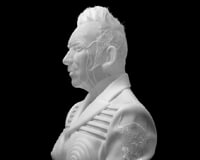
Angélique
« White sounds like silence… ».
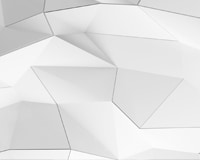
Homemade
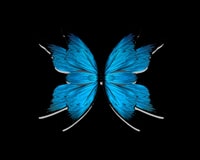
Explorer
Editorial
White and light

The same kind of questions guide Angélique, an extraordinary sculptor that CULTURAMA presented in number 39.
Beings of light, we leave diaphanous traces of our terrestrial passages, reminding us that beyond death, the aerial memory of the present might subsist.
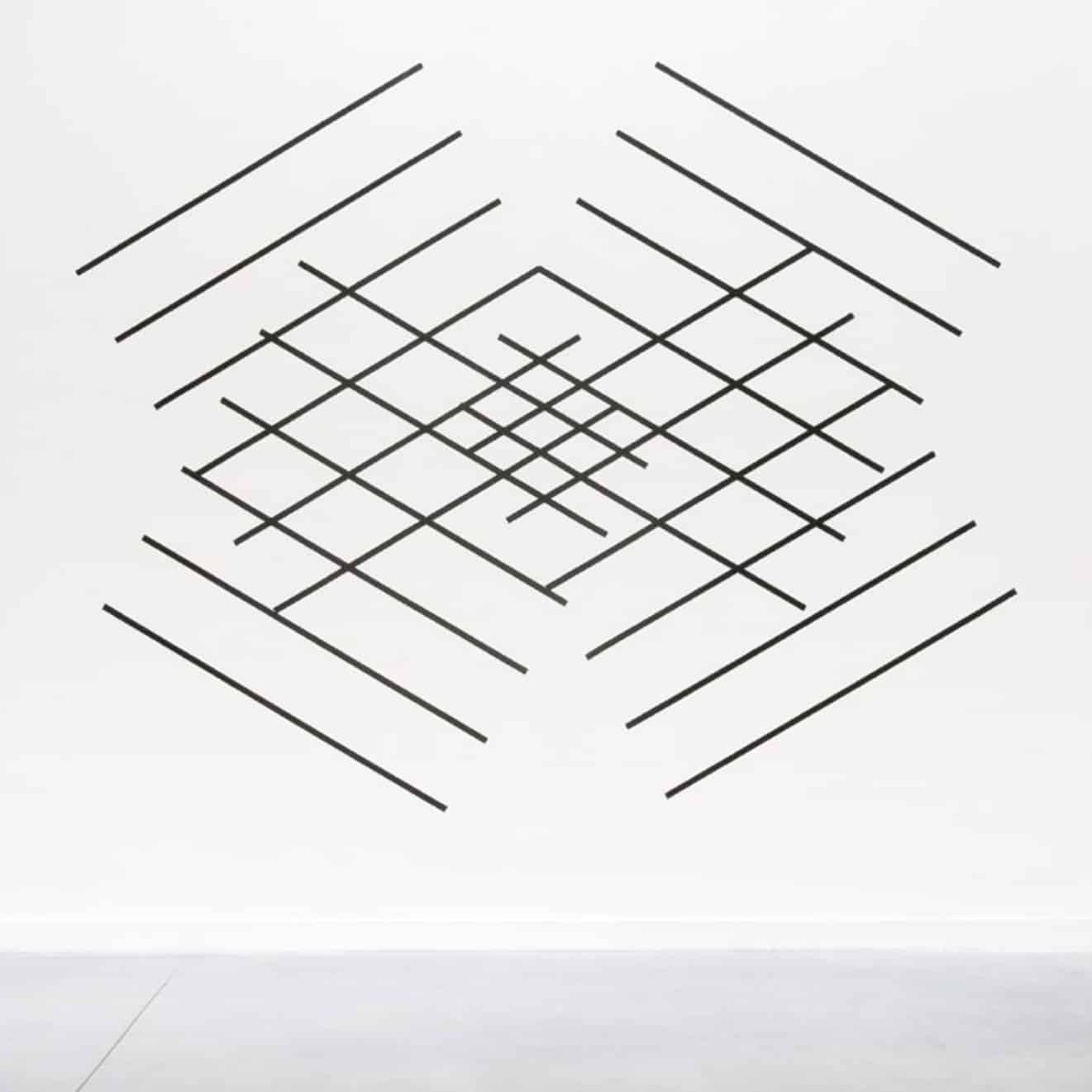
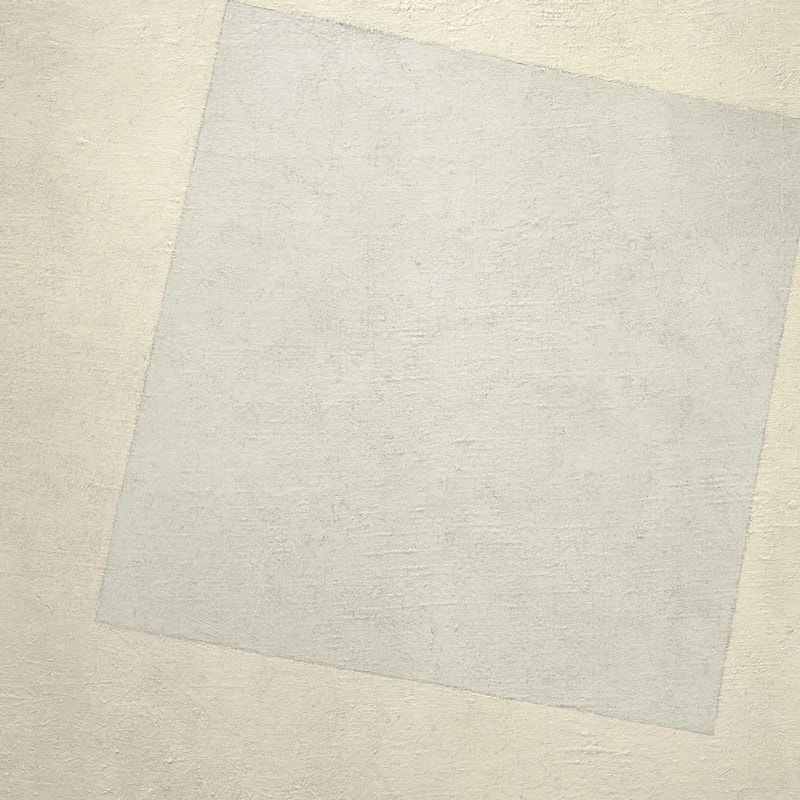
White sounds like a silence, no foremost beginning.
Vassily Kandinsky

THE MYSTERY OF ORGANDY
ANGÉLIQUE
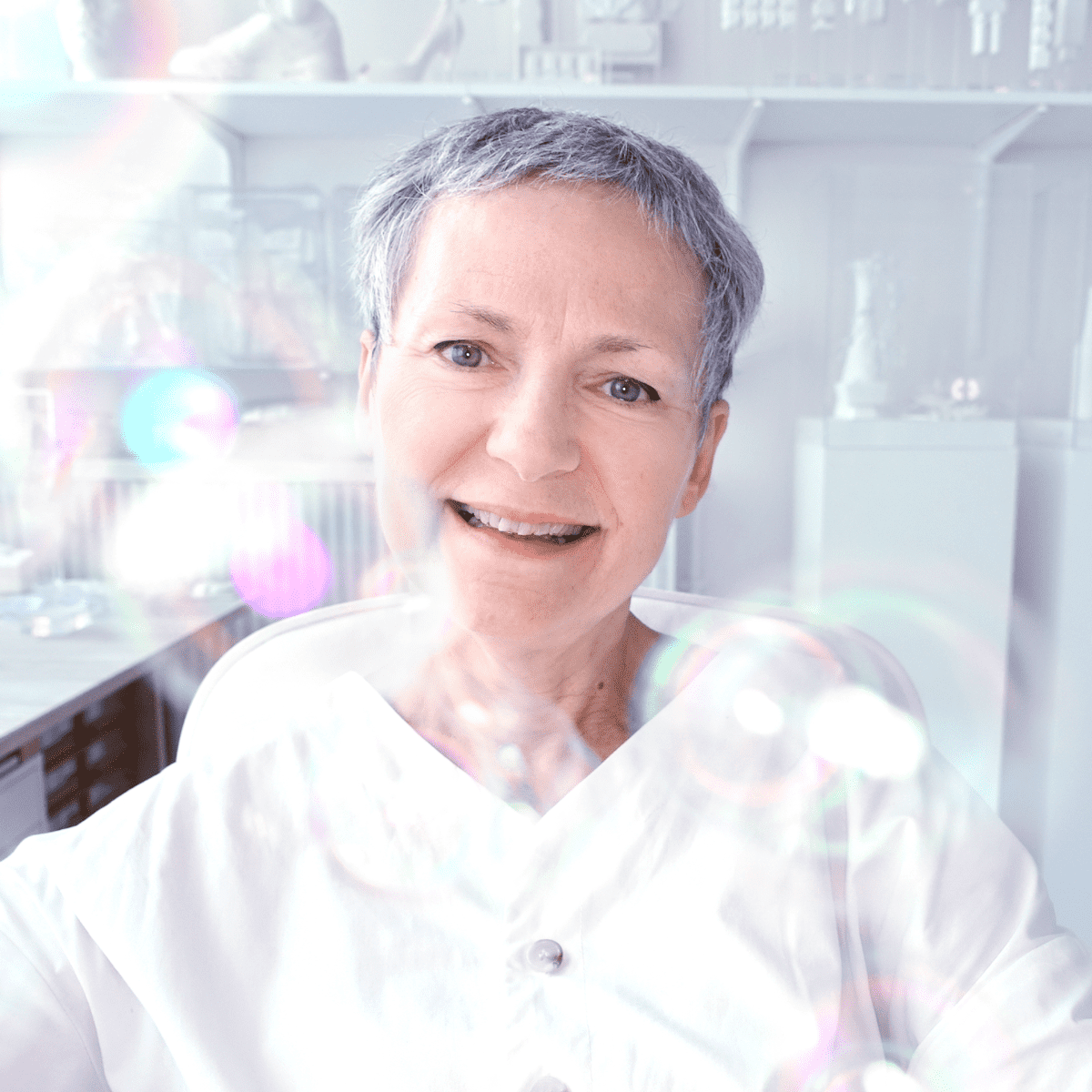
Eric de CULTURAMA: We have already talked (cf. CULTURAMA N°39) about the importance of white and transparency in your work: emptiness and fullness, the envelope without the body. Is the paradox of an immaterial presence at the center of your creation?
Angélique: The well-known dichotomies, material/immaterial, body/mind, surface/depth, entice me; another thing left is the balance between such extremes. I do not carve marble or stone, but fine cotton; I shape transparent sheets of polyethylene terephthalate. The verb to sculpt is almost unsuitable, I do not remove material from a block, but the result is indeed that of a volume which is so delicate that one can see through it, as if it were a vision, an afterimage. To show what is about to disappear is to show it in a more heightened way.
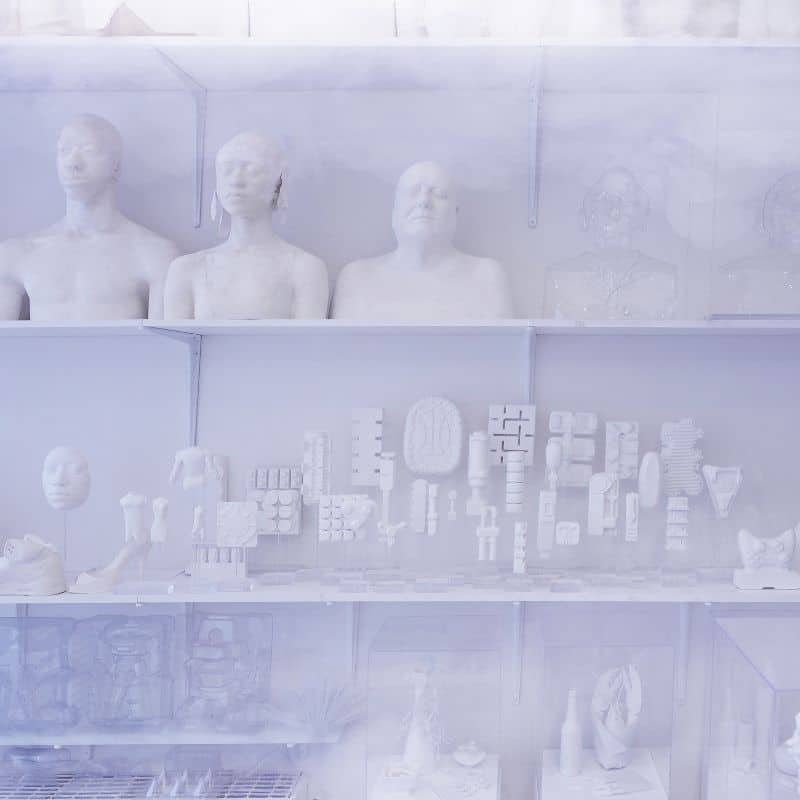
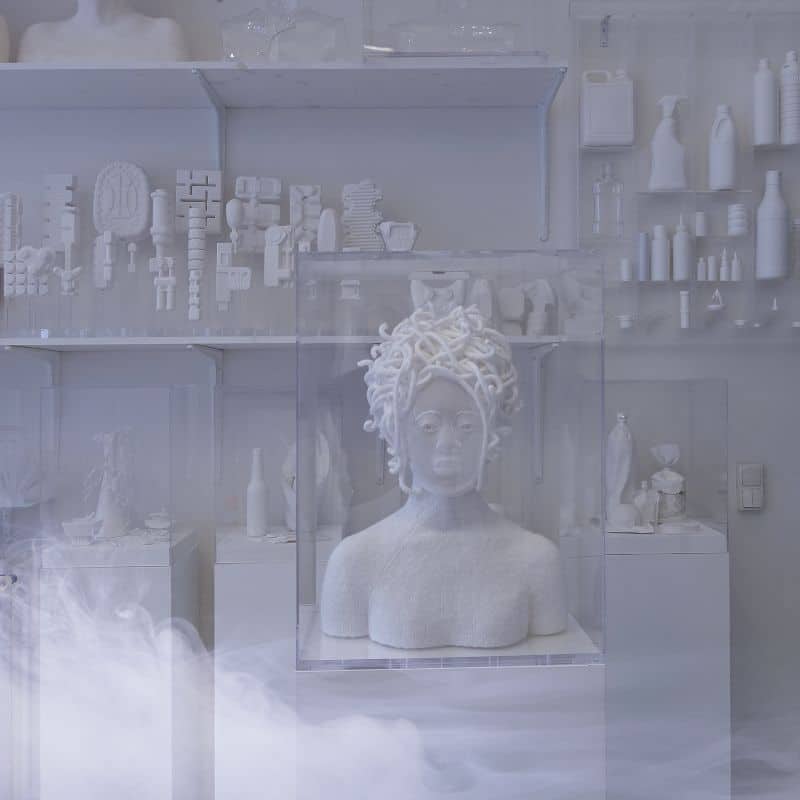
Eric: Does your artistic approach reflect your fascination with life and death? Where do you think it originates from?
Angélique: I deeply feel Malraux’s words: “Art is an anti-fate”. In other words, Art is what enables man to defy time and eventually access eternity. Eternity for him or for the world around. There is a wordplay that I find interesting: a snapshot of years. Make the moment last, extract it from the flow of time to save it. Art gives a particular density to life.
I like these words from Brigitte Fontaine: “They say I’m eccentric. It’s quite the opposite. I am exocentric, that is to say perfectly centered”. So there you have it, the Art life is a good life and even if some of my sculptures are austere (Vanity, Virus, CRS agent…), they all share joy for life.
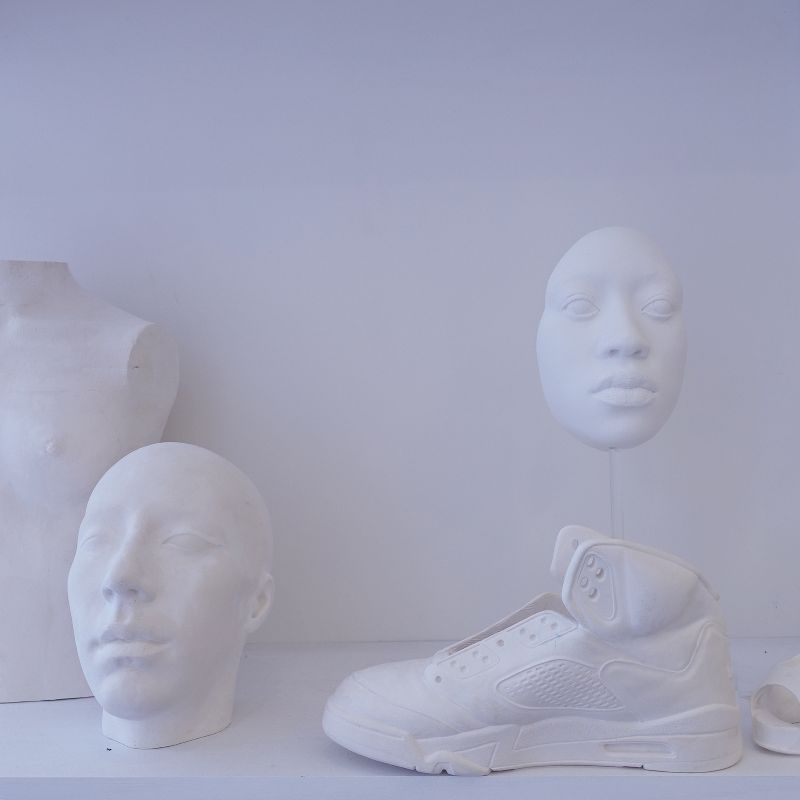
Eric: You turned to sculpture after studying textiles. Is this journey at the origin of your manufacturing process, which combines delicacy and surgical techniques?
Angélique: To tell the truth, my first loves are literature, song perhaps, words for sure. I did a bachelor’s degree in humanities and would have liked to write, but I couldn’t find the way. I have wandered ever since: second-hand dealer, stylist, pattern maker, seamstress. My hands ended up learning a skill and, perhaps, I needed this physical, manual grip, into which my mind, my creativity could slip… and my unconscious too. I have the impression that things have forced themselves onto me: sculpture, whiteness, transparency.
The delicacy and the surgical technique allow me to hide the gesture behind my creations. The technique must be forgotten, the stitches must not be seen. Like Leonardo da Vinci and sfumato, I would like the transitions to be made with great delicacy. Journalist Céline Catucci wrote about my work: “The sweetness of passing time”.
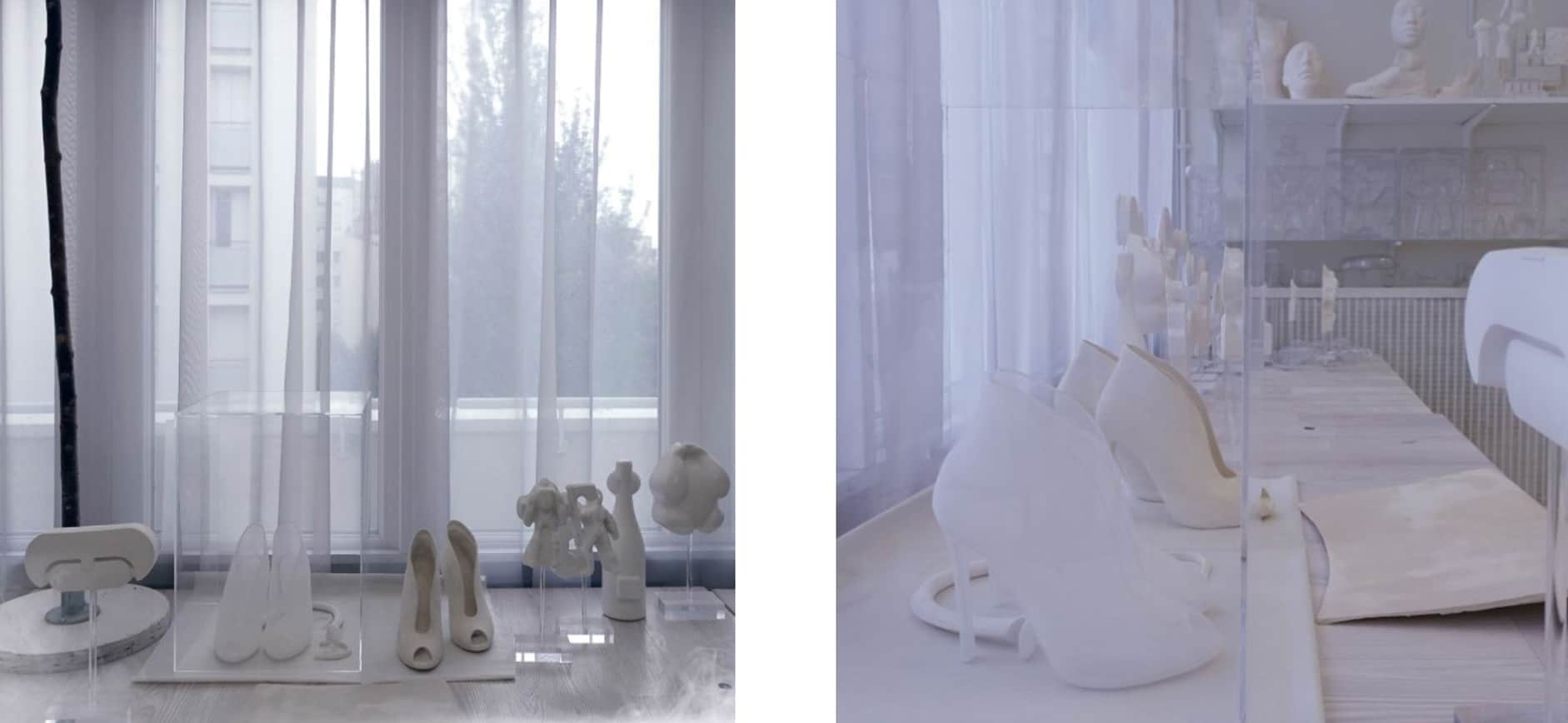
Eric: Where does sewing start in your design process? Can you tell us about the Fiber Art Fever group?
Angélique: I start to sew on previously prepared cardboard or plaster templates. I assemble as long as possible on those structures, then I have to break free, to test the final hold of the organdy surface held by its seams alone; the emptiness within.
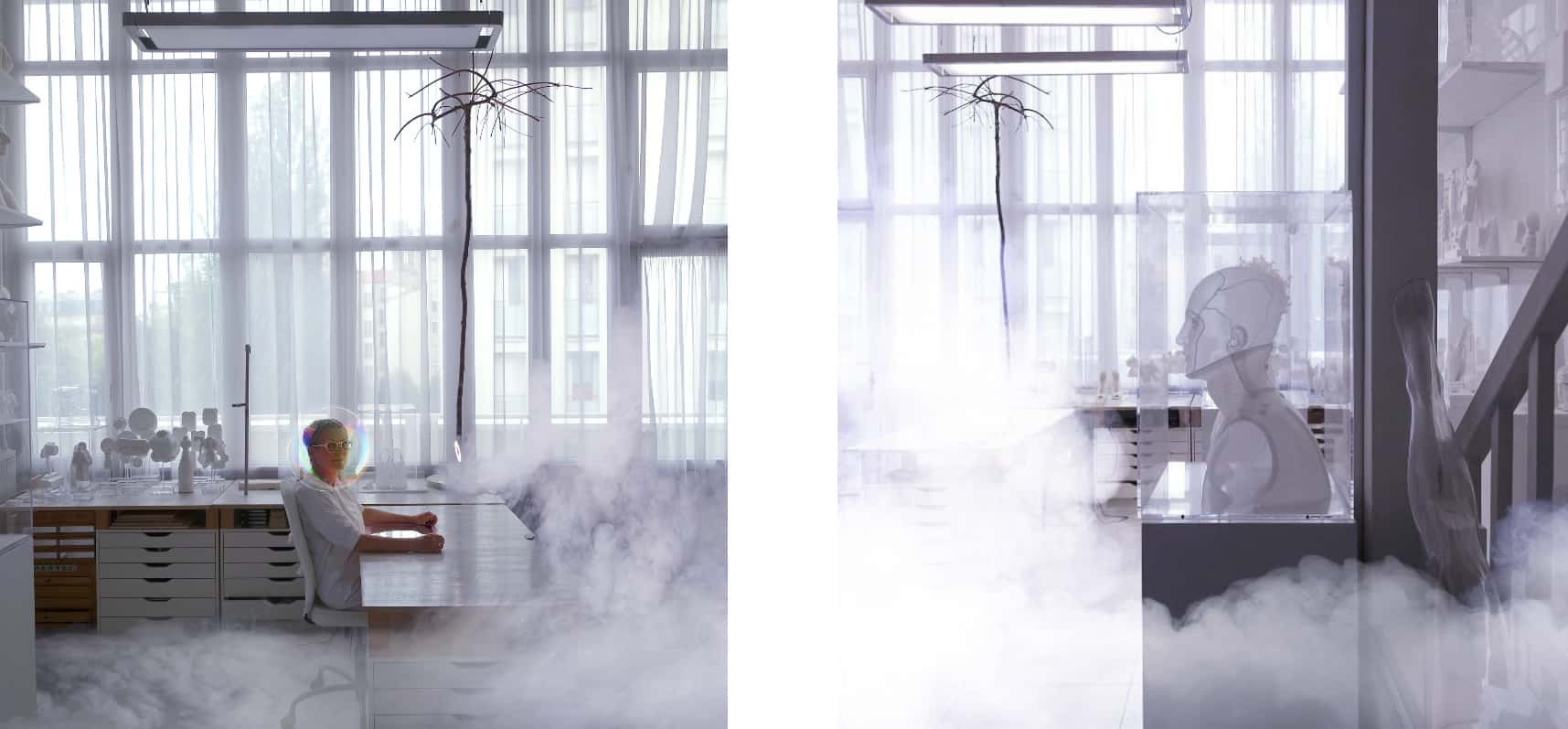
Eric: In your work, objects are as important as portraits, and characters can exist through accessories, like shoes for example. What do you want to express through the details of these objects?
Angélique: God is in the details. In any case, it is in the details that an era is told. Adornments, tattoos, clothes are personal choices from a range of social levels. I like the idea of archetypal figures: the hip-hop dancer, the rapper, the woman with piercings. They talk about our society, our present, the products of men. The classic theme of Still Life becomes Still Life at McDonald’s, where we mainly see food wrappings.
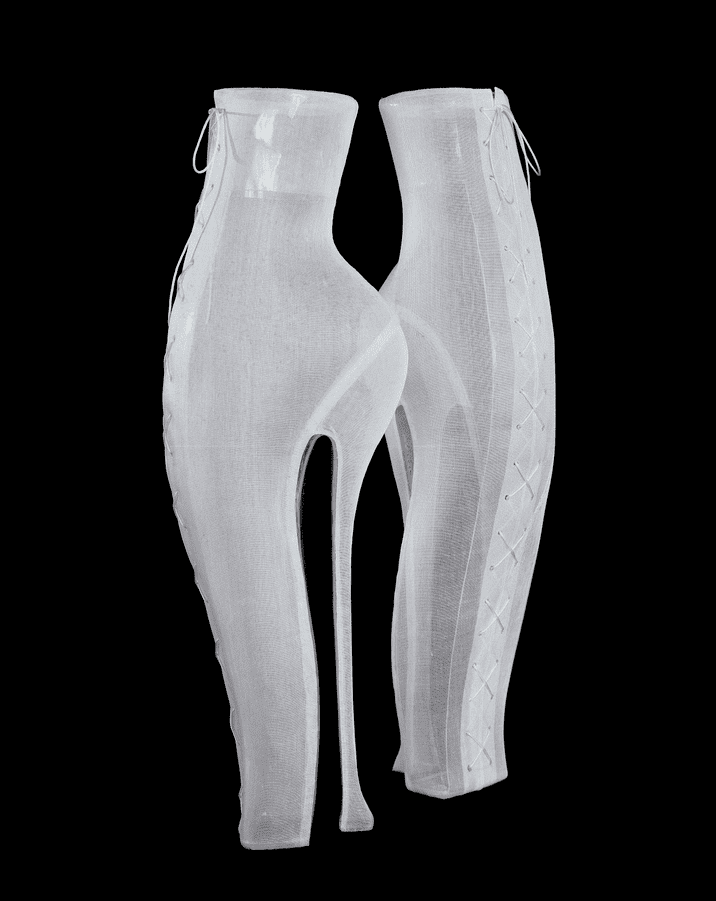
Eric: Between Jean-Paul Gaultier, the woman with piercings and so many others, what are your favorite works? For what reasons?
Angélique: So far, I have not been confronted with emptiness, in the sense that all the sculptures I made, I had to do them, it was important to me. Jean-Paul Gaultier was a commission from the start, but a brilliant commission because he is an iconic fashion figure, and even more, the witness and irreplaceable actor of an era. Who decides one’s looks? He puts skirts on men, blurring the notion of gender. He puts what goes under on top, so garter belts and bras end up over clothes. He transposes the popular into haute couture and makes from the sailor swimsuit an evening dress in striped feathers. I very much regret that I was not able to do the Karl Lagerfeld bust, the one I planned a long ago. There, the superimposed image would certainly have been that of the dandy.
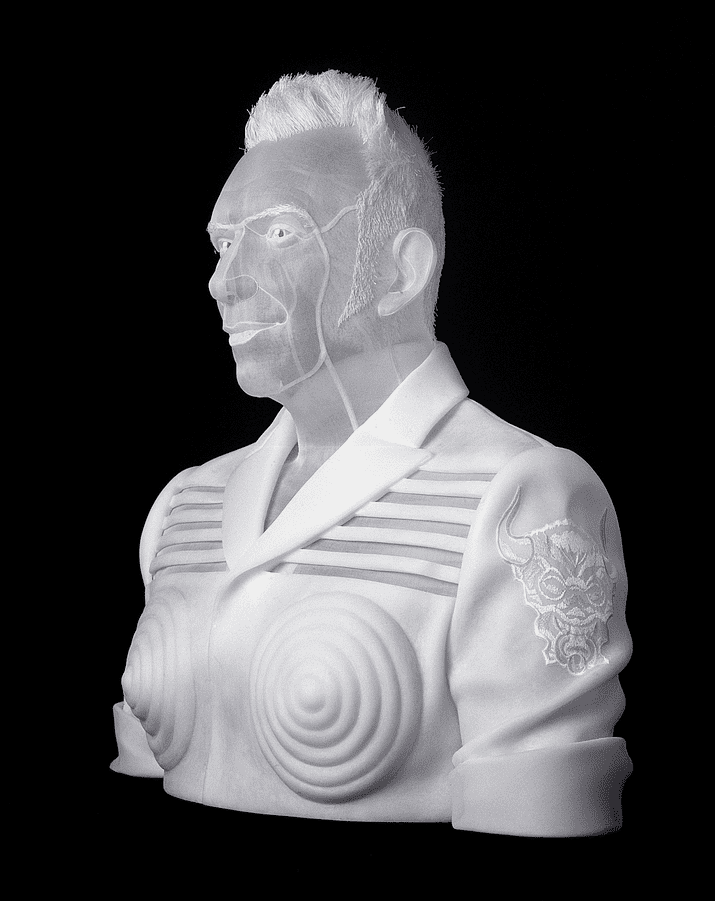
Eric: Do you know what will be your next portraits?
Angélique: Yes, the next sculpture will be called Madame De II. It will be a portrait of a woman with her handbag (Delvaux), her shoes and some accessories. I have already made the Madame De I composition with a Hermès bag, Dior glasses, Tesla’s keys and the Starbucks mug. After that, I have an idea for a Nefertiti sculpture that has been stuck in my mind for a long time. The Egyptian statue is a base for aesthetic inspiration in terms of body and head proportions. In place of the pharaonic headdress would be an imposing overlay of interwoven dreadlocks.
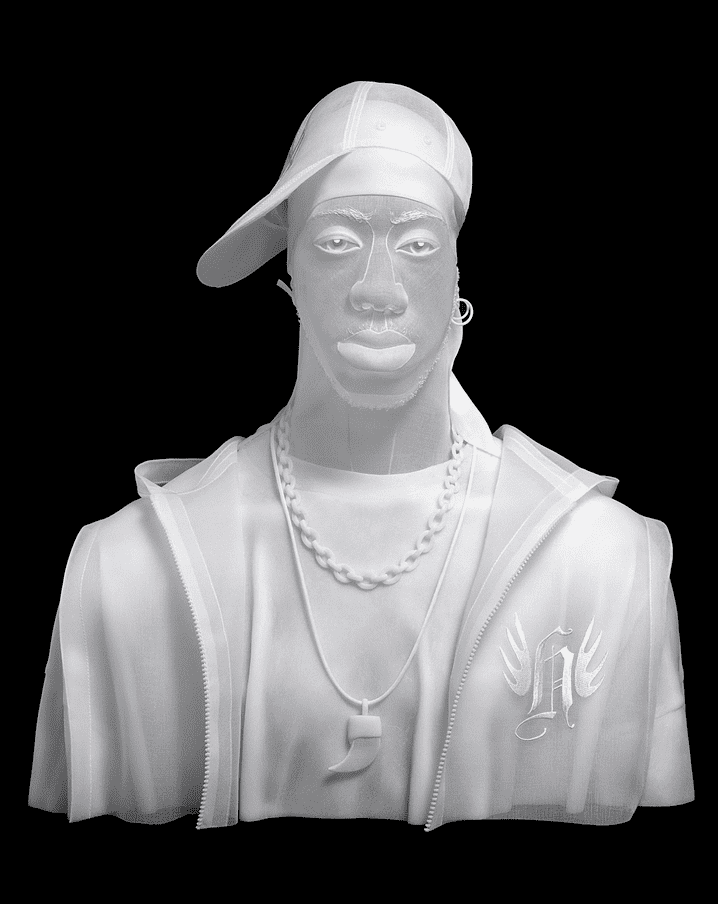
Eric: Your exhibition plans have certainly been postponed and moved around. Can you give us an update on upcoming events?
Angélique: In September, I am being represented by the Maison Parisienne gallery during the The collector’s walk exhibition at the showroom near the Madeleine in Paris. This gallery will also be present at the PAD 2020 from October 19th to 23rd.
HOMEMADE
PEPS & VITAMINS
Related episodes
Discover
CULTURAMA STUDIO
Editing team
- Barbara Marshall
- Grigoriy Manucharian
- José Man Lius
Contact us :
ericdeculturama@gmail.com
© Culturama.studio
